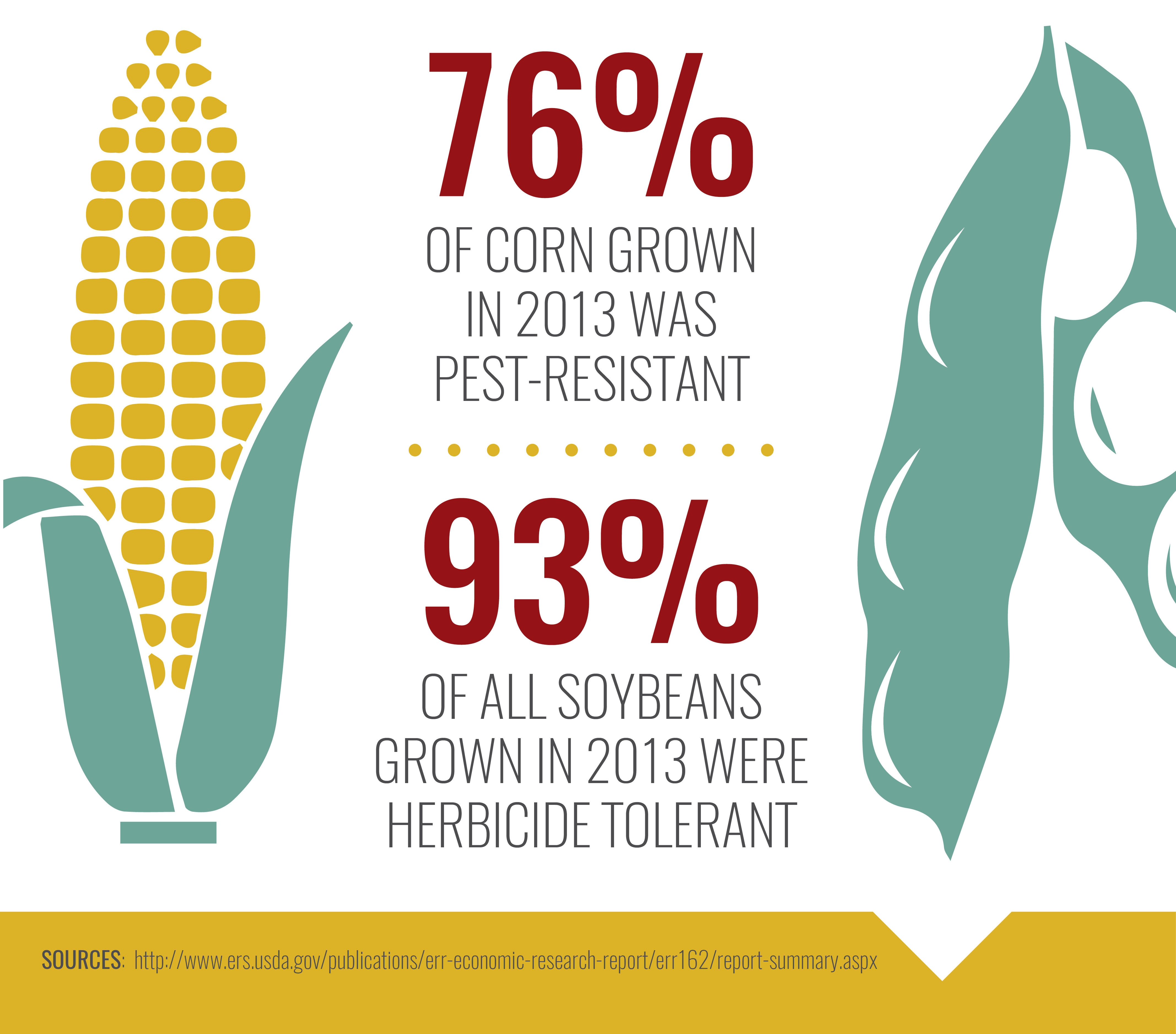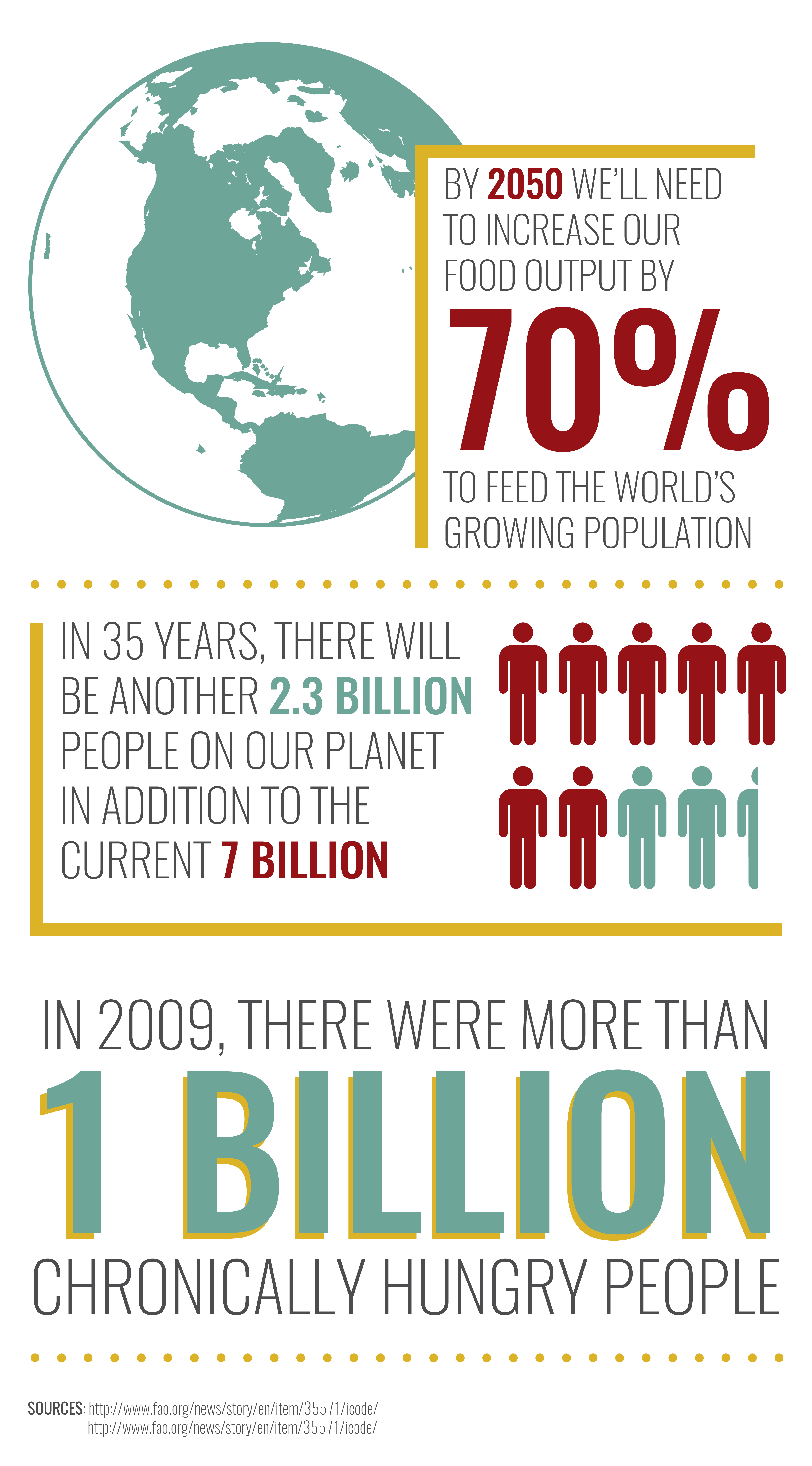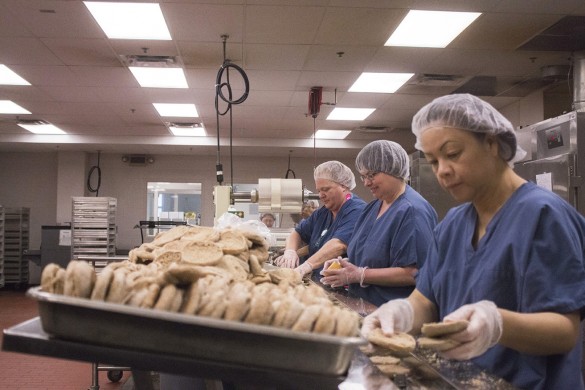Words by Jennifer Gardner
Most Americans don’t pay attention to the food in their shopping carts beyond the cursory glance at the brand and the price. Maybe a gander at the nutrition facts if they’re feeling up to it. They probably have no idea where it was grown — or if it was grown. Or if it contains any genetically modified organisms.
In all likelihood, it does. Eighty percent of all processed food is made from genetically engineered fruits and vegetables. Ten different types of fruits and vegetables on the market are currently modified. That unblemished apple eaten for lunch? Probably a GMO. That sweet corn from dinner last night? Ditto. And that papaya? Definitely. Broccoli wouldn’t even exist if it wasn’t for genetic modification. But don’t panic; it’s still real food. It’s just grown from seeds that scientists and farmers genetically tweaked to produce more nutrients, resist insects or demand less water.
In fact, humans have been altering the genetic makeup of their food since the advent of agriculture around 12,000 years ago. Cross-pollination of plants and selective breeding of livestock have produced many of the foods that are eaten today. Sweet potatoes are only here because humans bred them 8,000 years ago from regular potato plants. Only recently have scientists begun to tinker with the DNA of plants and animals on the molecular level, leading to the rise of the genetically modified organism.
Study after study has shown that GMOs are safe for consumption, yet many consumers still panic at the mere mention of those three letters. Illinois farmer Katie Pratt says it’s all because of misinformation. “The term ‘GMO’ has been so distorted,” Pratt says. “Genetic modification isn’t a thing. It’s a technology.”
That doesn’t stop people from being upset. Some claim that GMOs are “harmful to our health” and that the federal government is failing at its duties by allowing them to be sold. Steven Druker, author of “Altered Genes, Twisted Truth: How the Venture to Genetically Engineer Our Food Has Subverted Science, Corrupted Government and Systematically Deceived the Public,” told National Geographic that genetically modified foods “have to be demonstrated safe to a reasonable certainty of no harm, and none of them have been … there is no reason to think that the risks for us are minimal.”
Pratt says that notion is ridiculous. “Genetically modified crops have been around for over 20 years now and they have been studied like crazy. They have been studied more than any pharmaceutical drug that hits the market. It takes 13 years for a genetically modified crop to go from research through the regulatory phase to hit the market. To bring a new car model to market is, like, two years.”
But a car never caused so much controversy.
The Benefits of Genetic Modification
Genetically modified organisms first hit the shelves of American grocery stores in 1994. The culprit? A tomato genetically engineered to slowly ripen and last longer on store shelves. Since then, GMOs have exploded — and so has the vitriol against them. Anti-GMO groups, outraged soccer moms and locavores alike have raised their pitchforks at companies like Monsanto, Cargill and Dupont Pioneer.
But before people get angry, they have to understand what a GMO actually is. By definition, a GMO is a plant or animal that has had genes from a different organism put into it to change certain characteristics. Crops like corn, soybeans and cotton are commonly altered to resist diseases and require less water and pesticides. Potatoes, squash, apples and canola are also on the list of USDA-approved genetically modified crops. There are 19 total.
An overwhelming majority of the crops grown in the United States are genetically enhanced in some form. According to a USDA study, 76 percent of the corn grown in 2013 was Bt (pest-resistant) corn, while 93 percent of all soybeans grown were Ht (herbicide-tolerant) soybeans, which means they can withstand stronger, more effective herbicides. These types of modifications allow farmers to save time and money. Pratt has found that by using genetically engineered seeds on her 5,500-acre family farm, she doesn’t have to spend as much time in the fields. The soil quality has improved because she doesn’t disturb it as much. She’s cut herbicide use in half, which improves overall water quality. These improvements are all thanks to genetic modification.
But genetically engineered crops don’t just benefit the farmer. Researchers are creating GMOs that have impacts beyond the field. “Golden rice,” for example, contains beta-carotene, which can partially make up for a vitamin A deficiency that can cause blindness in young children. It was developed in the early 2000s, but its approval has been delayed because of anti-GMO backlash. A study published in the Environment and Development Economics Journal found that golden rice could’ve prevented vitamin A-related blindness and death in countries like India and other countries in Asia, where there are high rates of severe vitamin deficiencies. GMO opponents didn’t consider that. They were focused on stopping the approval instead. Greenpeace, an organization strongly against GMO use, lobbied against it because they believed golden rice is “environmentally irresponsible, poses risks to human health and could compromise food, nutrition and financial security.”
Another benefit of growing GMOs is that they produce higher yields as a result of their resistance to insects. The Food and Agriculture Organization of the United Nations (FAO) says that by 2050, we will need to increase our food output by 70 percent to feed the world’s growing population. As it stood, there were more than 1 billion chronically hungry people in 2009. In 35 years, there will be an estimated 2.3 billion people on our planet in addition to the current 7 billion. And they are going to need to eat.
Critics will argue that we already produce enough food for such a population surge. Currently, the world produces 1.5 times the amount of food needed to feed the population. But that’s where things get sticky. Food on a global scale is difficult. The FAO estimates that as much as one-third of food is lost or wasted annually just on its journey from farm to table. One-third. That doesn’t even take into account the grain grown for animal feed or the food that is too perishable to ship. Since that much food isn’t making it to our tables, producing more is one solution to feeding our planet.
David Zilberman, professor at the University of California, Berkeley, and world-renowned expert on agriculture and resource economics, agrees. “There is no serious scientist that says GMOs are a problem,” Zilberman says. “GMOs make it much easier to feed the world. When we were organic, we had [a population of] 1 billion. When we used pesticides, it was 7 billion. GMOs are better and can solve the problem much faster.”
Over 2,000 peer-reviewed studies have been performed on genetically engineered crops and none have found any significant health implications of GMOs. Anti-GMO advocates argue concerns like liver damage and organ failure, but there is no scientific evidence supporting this.
In fact, the most comprehensive study of GMOs, completed by a geneticist from the University of California, Davis, reviewed 29 years of livestock data, including more than 100 billion animals. The study didn’t “reveal any unfavorable trends in livestock health and productivity … or any difference in the nutritional profile of animal products derived from [GMO]-fed animals.”
Anti-GMO Backlash
Try Googling GMOs. Six of the 10 links on the first page are dedicated to anti-genetic engineering efforts. Anti-GMO organizations are clearly identified as such, as well as websites that, on first glance, appear to be general information sites. They pretend to be neutral, but after reading them, it becomes obvious they aren’t. So why are so many people vehemently against them? The answer is, well, complicated.
Megan Larmer, director of strategy and community engagement at Slow Food USA, is against GMOs. The Slow Food movement itself is focused on creating “good, clean, fair food for all” and, as Larmer sees it, genetically engineered crops as they currently exist, are the antithesis of that.
Another common concern of GMO opponents is that genetic modification destroys genetic diversity. In 1998, delegates from every African country signed a rebuttal against a Monsanto proposal to test seeds in Africa. It stated that GMO technology “will destroy the diversity, the local knowledge and the sustainable agricultural systems that our farmers have developed for millennia, and that it will thus undermine our capacity to feed ourselves.”
Larmer echoed that statement. Genetic modification “is a technology that benefits patent organizations and large corporations and steals intellectual property from the small holders who, by right, are the agricultural stewards of biodiversity,” she says. She’s worried about large farms driving out the smaller ones. Based on data from the 2012 census of agriculture, however, the USDA concluded that “even though acreage and production have shifted to much larger crop farms, crop agriculture is a long way from being dominated by extremely large corporate farming businesses.”
GMO opponents also disagree that genetic modification is necessary for sustaining an increasingly larger population. “We have been sold a bill of goods by agri-industrial corporations that want to tell us that GMOs are an accurate, useful technology for feeding the planet,” Larmer says.
Despite her opposition to genetic engineering, Larmer acknowledges, “There certainly is the possibility of GMO technology to be used towards the betterment of agriculture as a whole.” She doesn’t believe the way the technology is currently used is acceptable. For her, genetic engineering would have to be “employed towards creating plants that thrive in organic agriculture or small-scale farming, and it would have to be open source” so the farmers could grow crops from the previous year’s seeds.
GMOs Are Here to Stay
Pratt is pleased with the results her family farm has seen from GMOs. Spending less time in the fields allowed her to become a farm and GMO advocate. She regularly posts on her educational blog, Rural Route 2, about her experiences on the family farm and educates a non-farming public that has become wary of GMOs because of the “scare tactics” and “fear mongering” anti-GMO groups use. Pratt’s goal is to create a conversation, both about what life on her farm is like and larger-scale issues affecting the agriculture industry, like GMOs.
“Sometimes people don’t agree with me, but more often than not, I find common ground with folks about very basic things,” Pratt says. “I always thank people for their comments, remind them that we are entitled to our own opinions but not to rewrite facts, and then I share my own experiences or invite them to seek out other farmers.”
This issue sparks serious, sometimes ugly, passion on both sides of the equation. GMOs are part of the agricultural conversation. They’re everywhere — on farms, in grocery stores, on a dinner plate. It’s simply science, so take a bite. The potato won’t taste any different.













